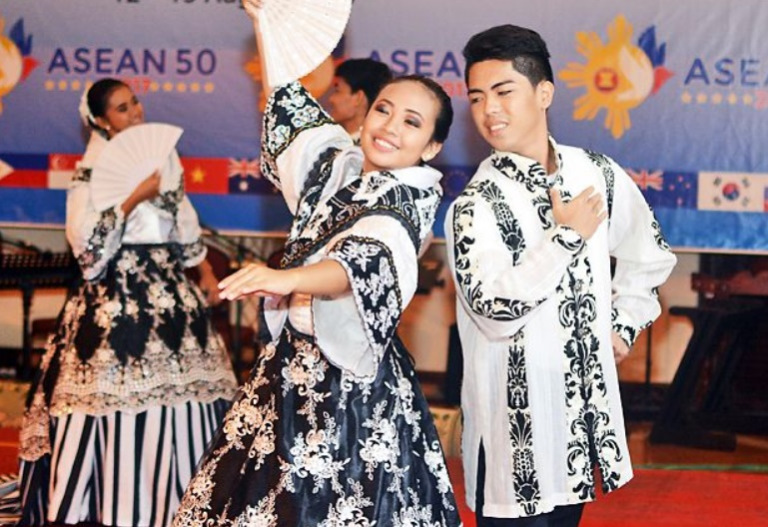Carinosa Dance History
In Spanish, “carinosa” means “affectionate” or “loving”, and it is a dance for couples.
During Spain’s colonization of the Philippines, the Spaniards in Panay Island introduced the dance to the region, and the locals received it quite well. The influence of the Spanish culture was eventually forgotten.
A proposal to make Carinosa the official national dance in the Philippines was introduced in 2014. Unfortunately, it didn’t pass the evaluation.
Carinosa Dance Performance
Despite the romance conveyed through the performance, the dancers need to avoid directly touching each other.
They need to express their feelings with their faces and movements: the man pursues while the woman encourages it with a tad of shyness.
As the dance begins, the lady will hold onto the fabric of her dress with one (or both) hand as an indication of sheepishness while moving around the dance floor.
When she uses the props, she needs to wave it according to the beats.
The couple will exchange eye contact with the handkerchief between them as if doing peek-a-boo and also grip the seam of the fabrics.
The dance continues with them courting each other. If one stays still, the other will dance around them.
The performance can expand for a whole group if everyone has a partner, for the romantic scenario of this dance is indispensable.
Check more: What Is Kizomba Dance?
Costume for Carinosa Dance
Due to the Maria Clara Spanish routine associated with it at first, the first performers also adorned Maria Clara dresses and Barong Tagalog.
Nevertheless, the Filipino female dancers changed to their camisa de chino (a white sleeve) and potadyong kimona (a Visayam dress) when it became their turn to adopt and take the Carinosa to a new level of popularity.
The guys will put on colored pants with a barong Tagalog.
Since it is as popular as a national dance, the dancers may also wear anything they like as long as it is a costume of the Philippines.
Still, the soul of the dance is the handkerchief and the hand fan since they create a more clearly romantic vibe between the dancers.
